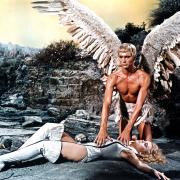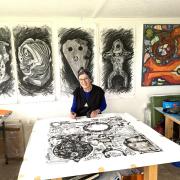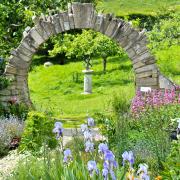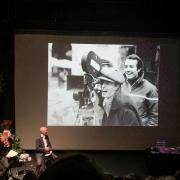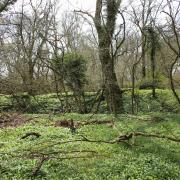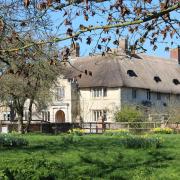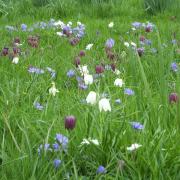Tracey Emin’s bed spread, Marie Antoinette’s favourite painter, and the first woman member of the Royal Academy all feature in a female focused exhibition at the Russell-Cotes Gallery & Museum

The feminist art historian Linda Nochlin once famously asked, “Why have there been no great women artists?” It was a provocative question designed to spark a debate about why there are no female equivalents of Michelangelo, Rembrandt or Picasso.
She handily provided her own answer - for precisely the same reason that there have been no great Eskimo tennis players. Or, to put it another the way, the lack of opportunity faced by anyone not born white, middle class and male.
The fault, she said, lay in the network of social conventions and institutions that for centuries have ensured that art history reflects white, Western male values. Nochlin was writing 40 years ago and though ethnicity and gender are far less of an issue in the 21st century art world, her essay still resonates.

Her arguments are brought into sharp focus by Dangerous Women: From Kauffman to Emin, the latest exhibition being staged at Bournemouth’s Russell-Cotes Art Gallery and Museum.
The show, which has been curated by the museum’s director Sue Hayward, offers a fascinating overview of works by female artists from 18th century pioneers like Angelica Kauffman and Élisabeth Vigée Lebrun to contemporary hard-hitters like Tracey Emin.
The display, which also features unconventional sculptors, Pre-Raphaelites, suffragettes and war artists, invites the viewer to explore how women have re-shaped the art world against the odds. Using many works from the Russell-Cotes own collection, a number of which have never been publicly displayed before, the show examines what it has meant to be a woman in a man’s world and the pressure, particularly in the Victorian era, for ‘lady painters’ to be seen as genteel.

The exhibition acknowledges the sheer cunning, guts and force of personality it took to challenge convention and defy expectations, even if you were immensely well-connected. It is no surprise perhaps that historically many of the women who have succeeded in the art world have been those with social standing and influential contacts.
Kauffman for instance, though prodigiously talented, would have been unlikely to become the first woman to gain entry to the Royal Academy had she not enjoyed the patronage and friendship of RA founder Sir Joshua Reynolds. Likewise Vigée Lebrun found that being Marie Antoinette’s favourite painter was quite a career-booster. Both artists still had to fight their corner in a male dominated world though.
Among the many works on show are some real game-changers like Black Beauty artist Lucy Kemp-Welch’s extraordinary ‘Foam Horses’ (1896). There are war paintings like Elizabeth Butler’s ‘A VC of the Seaforth Highlanders’ and Evelyn Dunbar’s ‘Women’s Land Army Hostel’ (1939) and a military portrait from the museum’s collection ‘Young Officer in the Cheshire Militia’ (1760) has recently been identified as an original Kauffman by art historian Dr Bendor Grosvenor. The jury is still out on whether his assessment is accurate. Visitors to the exhibition are invited to cast their own vote.

There’s an intriguing copy of Anna Lea Merritt’s Pre Raphaelite masterpiece ‘Love Locked Out’. The original was painted by Merritt in memory of her late husband, who had died in 1877 just three months after their wedding. This 1889 copy was commissioned by Merton and Annie Russell-Cotes from a male artist Henry Justice Ford.
In 1900 Merritt wrote that she felt she had not faced much, if any, discrimination because of her gender, but in a comment that seems dismaying to the contemporary mindset she added:
“The chief obstacle to a woman’s success is that she can never have a wife. Just reflect what a wife does for an artist: Darns the stockings; keeps his house; writes his letters; visits for his benefit; wards off intruders…It is exceedingly difficult to be an artist without this time-saving help. A husband would be quite useless.” Henry Justice Ford by the way was still unmarried when he copied Merritt’s work.

Among my favourites is a stunning bust of George Bernard Shaw by Kathleen Scott, the widow of fated Antarctic explorer Captain R.F. Scott. It’s perhaps telling that even the highly educated GBS was non-plussed by sitting for a female artist, even one he greatly admired. Seeing Scott in her artists’ overalls, he is reported to have exclaimed: “No woman ever born had a narrower escape from being a man. My affection for you is the nearest I ever came to homosexuality.”
All these women helped break down the most extraordinary barriers and maybe, just maybe, gender is finally becoming less of issue.
Fast forward to today and Tracey Emin’s apparently seamless transition from ‘Mad Tracey from Margate’ to Professor of Drawing at the Royal Academy shows a paradigm shift in attitude and expectation.
There are two Emins on show at the Russell-Cotes - the film installation ‘Why I Never Became A Dancer’ and… a bed. Not THE bed. There are no grubby knickers, used condoms or empty vodka bottles here. That one got flogged for £2.5 million to art dealer Jay Jopling at a Christie’s auction last year.
This is Emin’s 1995 bed cover in wool, cotton and felt called ‘Here To Stay’, it marks her response to an early US tour. An accompanying notice states that it is lying on a divan kindly loaned by the nearby Miramar Hotel. How times change! Fifteen years ago the words ‘Tracey’ ‘Emin’ and ‘bed’ would never have been seen as good PR by a four star hotel.
Tellingly Bournemouth councillor Lawrence Williams, portfolio-holder for economy and tourism, saw the bigger picture straight away and focused solely on Emin in his official comments issued to the media before the exhibition. He took pains to point out that Professor Emin is now considered “One of the 100 most powerful women in the UK.” As such of course she is a guaranteed crowd-puller.
Also included in the contemporary section of the show is sculptor Linda Joyce’s, portrait (she loathes the term bust) of Amy Winehouse and a film-installation by recent Arts University Bournemouth fine arts graduates Rachel Howard and Robin James Sullivan.
Robin, a six foot five inch, pipe-cleaner thin, cross-dressing performance artist, told me: “Gender shouldn’t be an issue but unfortunately it is. For me it’s not so much the male domination of the art world that’s the problem, more the perception of gender in society itself. It’s a huge issue that affects every man and woman in the world. These dangerous women paved the way for a man like me. Otherwise I would not be able to sit here wearing a dress and talk to you. What they were doing was groundbreaking and sometimes actually physically dangerous but they carried on regardless, absolutely renouncing the idea that they couldn’t succeed.”
Dangerous Women! From Kauffman to Emin is at the Russell-Cotes Art Gallery and Museum until Sunday 8 March 2015. For more information visit russellcotes.com.
***
READ ON
• Sensational Sandbanks property wins major international design award - A sensational Sandbanks property has just won a major international design award. Woadden Nash, the Poole-based company who created this award-winning family home, gives us an exclusive through the keyhole tour
• Farrow & Ball and Dorset Magazine Readers Event at Deans Court - Join us for a Colour in the Home day in association with Farrow & Ball. Dorset Magazine and paint and wallpaper specialist Farrow & Ball have teamed up to invite readers to an exclusive event on Thursday 5th March at the idyllic and historic Deans Court, near Wimborne Minster.
• 21 famous people who went to school in Dorset - Celebrities and other famous figures who went to school in Dorset.






